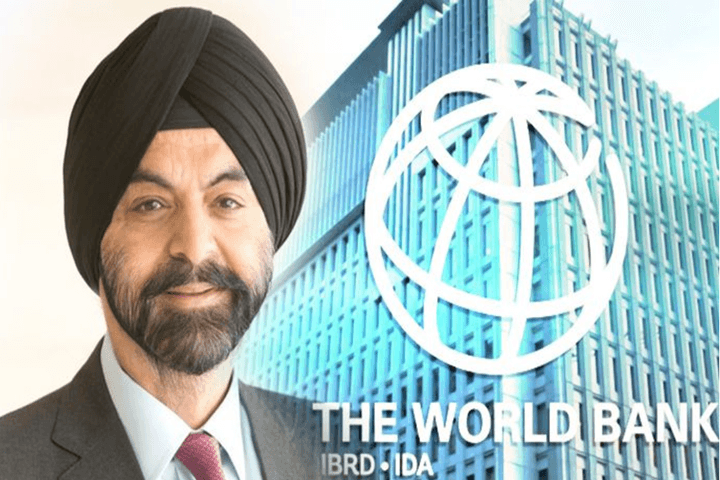
Opinion: World Bank’s Historic Shift to Fund Nuclear Power Accelerates Net-Zero Race
Watershed Moment for Nuclear Power
On 10 June 2025, a watershed moment for nuclear power was ushered in, when, at the Board Meeting of The World Bank, after its President, Ajay Banga (Fig. 1), presented an Energy proposal to the Board, the Board members agreed to lift the bank’s decade-long ban on financing nuclear power.
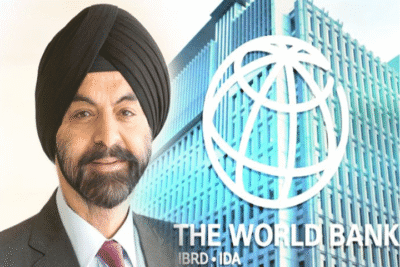
Fig 1: Ajay Banga , President The World Bank
Source: https://caribbeannewsglobal.com/world-bank-group-president-banga-global-tour-to-write-a-new-world-bank-group-playbook/
World Bank’s Rationale for Change
World Nuclear News (WNN) had reported on 12 June 2025 that Ajay Banga had set out the rationale for change, saying that “electricity is a fundamental human right and the foundation of development and further articulated that goal is to give countries the flexibility to choose how to deliver the reliable energy needed to meet their development goals, especially with electricity demand in developing countries expected to more than double by 2035, which the World Bank thinks will require “investment in generation, grids, and storage to rise from USD280 billion today to roughly USD630 billion”.
In an email to its staff, seen by WNN, Ajay Banga emphasized that “what’s new is that, for the first time in decades, the World Bank Group will begin to reenter the nuclear energy space.”
Working in partnership with the International Atomic Energy Agency (IAEA) and other partners, “we will support efforts to extend the life of existing reactors in countries that already have them, and help support grid upgrades and related infrastructure. We will also work to accelerate the potential of Small Modular Reactors (SMRs) – so they can become a viable option for more countries over time”.
A Flashback to 2021-2024
Key US Legislation instrumental in the World Bank’s Landmark Decision to lift its ban on Financing Nuclear Power
International Financing Bill 2021, 2023
In the US, Lawmakers recognizing the importance of financing nuclear power to support climate change, energy transition to reach net zero goals, have introduced key legislation for this purpose.
US Republican representative Patrick T. McHenry had introduced International Financing Bill in March 2021 by which requires the U.S. Executive Director at the International Bank for Reconstruction and Development (and the U.S. Executive Director at any other international financial institution deemed appropriate) to support financial assistance for the generation and distribution of nuclear energy, consistent with U.S. national security interests.
Congress.gov had reported that on 2nd February 2023, US Republican representative Patrick T. McHenry and and French Hill had reintroduced the International Nuclear Financing Bill
A Definitive Report by The Breakthrough on the Nuclear Ban by The World Bank- 6th October 2023
The Breakthrough published on 6 October 2023 a definitive Report on How Multilateral Banks Are Holding Back the Developing World ( Fig 2) which underscored that by blocking funding for nuclear projects, the World Bank and others are closing off low-emissions economic development
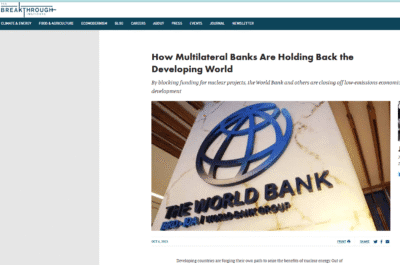
Fig 2: Breakthrough’s definitive Report Source: https://thebreakthrough.org/blog/how-multilateral-banks-are-holding-back-the-developing-world
Juzel Lloyd a Climate and Energy Analyst at Breakthrough the author of the definitive report had drawn attention to the Multilateral Banks’ Nuclear Problem highlighting that it faces a structural problem in that, the more funds a country adds into the bank, the larger that country’s voting share becomes and that this has given a handful of developed countries majority control over where funds are spent and in what ways, letting nuclear-opposing countries such as Germany block any serious consideration of nuclear power project financing.
The Report advocated that in particular, the United States, with the greatest voting power as the bank’s largest shareholder, should lead a strong drive to update the bank’s nuclear financing policy and outlined that recently, U.S. senators are pushing for more supportive nuclear stances like the International Nuclear Energy Financing Act, established to promote nuclear financing at the World Bank.
If the bill is enacted, the US executive director at the World Bank would be required to vocalize support and vote for nuclear financing. Regardless of its outcome, the United States will play a key role in access to nuclear funding within the World Bank.
The IAEA’s Key Role in Engaging with The World Bank on Financing Nuclear Power -April & June 2024
IAEA DG Mr Grossi had met with World Bank President Ajay Banga and ADB President Masato Kanda in April 2024 in the US to discuss the important role of nuclear energy in addressing some of the world’s most pressing development challenges and the opportunities for increased cooperation with multilateral development banks (MDBs) to help realize the full potential of peaceful nuclear applications. ( Fig 3)
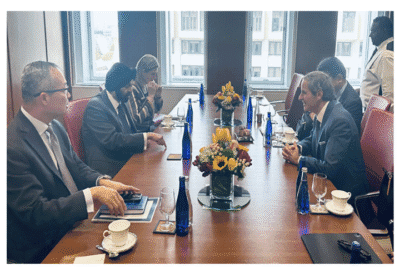
Fig 3: IAEA Director General Grossi met with World Bank President Ajay Banga during his three-day visit to Washington DC. In April 2024 Photo source: D. Candano/IAEA
Director General Grossi said that financing nuclear power would better align MDBs with the “new global consensus” forged at COP28 in Dubai, where the world called for accelerating the deployment of nuclear power ( tripling nuclear capacity by 2050) along with other zero-emission energy technologies to achieve deep and rapid decarbonization
Following this meeting with President Ajay Banga , Dr Grossi had met with members of the World Bank Group Executive Board in Washington on 27 June 2024 and shared the IAEA’s perspective on nuclear energy. ( Fig 4)
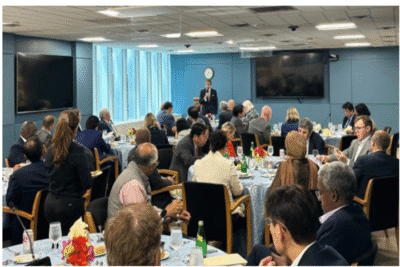
Fig 4: IAEA Director General Rafael Mariano Grossi speaks with members of the World Bank Group Executive Board in Washington on 27 June 2024. Source: Photo D. Candano Laris/IAEA
Fast forward to the present:2025
President World Bank Ajay Banga asked the Bank’s board of directors to review its decades old policy on Nuclear Power and informed that an energy policy proposal is expected in June 2026.
Brussel Times with Belga had reported on 21st March 2025 that World Bank President Ajay Banga is pushing to lift the ban on funding nuclear energy and has asked the board of directors of the world’s largest development aid funder to review its decades-old policy, he said at a meeting in Washington.
NucNet reported that in March 2025, Ajay Banga had remarked that “The good news is the board has come together and said they’re willing to discuss” the change, and he expected the move to be included in a broader energy policy proposal expected in June 2026.
The voices of large Stakeholders and their implications on the World Bank financing nuclear Power.- April and June 2025
Reuters on 12 June 2025 reported that the US is the Bank’s single largest shareholder, at 15.83% followed by Japan, 7% and China, close to 6 %.
The New York Times on 11 June 2025 by Max Bearax had highlighted that the United States the World Bank’s single largest shareholder holds significant sway over its policies and that in April 2025, Treasury Secretary Scott Bessent urged the bank to lift its ban, saying in a speech that doing so would “revolutionize energy supply for many emerging markets.”
German federal election and formation of a new government resulting in changing policy and energy landscape: February- May 6 2025
Germany’s political landscape has undergone significant transformations, evident in the recent federal elections, which took place on 23 February 2025. On 6 May 2025, the German Bundestag elected Friedrich Merz as the 10th Chancellor of the Federal Republic of Germany
NUCNET reported that the new government in Germany, led by the Christian Democratic Union, has voiced support for nuclear power, particularly the smaller next-generation reactors.(SMRs)
International Nuclear Financing Act 2025 -13 May 2025
Gov.Info had outlined that Senators Dave McCormick (R-PA) and Chris Coons (D-DE) had on
13 May 2023 introduced S. 1739, the International Nuclear Energy Financing Act 2025, which would encourage more financing for nuclear energy projects to create jobs here in the United States. which was read twice and referred to the Committee on Foreign Relations.
“If we’re going to help our allies achieve energy security and combat climate change around the globe, we need to encourage as many countries as we can to shift to reliable sources of clean power, and that includes nuclear energy,” said Senator Coons.
This bill would instruct U.S. representatives at the World Bank, European Bank for Reconstruction and Development, and regional development banks around the world to advocate for additional support for nuclear energy projects and the establishment of nuclear energy assistance trust funds. These efforts would include removing any prohibitions on financing nuclear energy projects.
The World Bank Fast-tracking Presenting New Energy Policy Proposal to Lift Ban on Financing Nuclear Power by 1 year
It was March 2025 that President Ajay Banga had shared that he had asked the lender’s board to reverse its long-standing policy against funding nuclear power projects and that he expected the move to be included in a broader energy policy proposal expected in June 2026.
However with escalation of initiatives worldwide, in particular in the United States by its Politicians/Law Makers with the introduction of the International Nuclear Financing Act first in March 2021 by US Republican representative Patrick T. McHenry in 2021 and latest on 13 May 2025 by Senators Dave McCormick (R-PA) and Chris Coons (D- DE ) which would encourage more financing for nuclear energy projects and in particular the bill would instruct U.S. representatives at the World Bank, European Bank for Reconstruction and Development, and regional development banks around the world to advocate for additional support for nuclear energy projects and the change in Government in Germany has witnessed the Bank’s decision on 10 June 2025 energy, a year earlier instead of the Bank’s anticipated review of its Energy Policy in June 2026.
The World Bank’s epoch-making decision to lift its ban on financing nuclear power much earlier than scheduled is pivotal in contributing to the world reaching net-zero goal
Although The World Bank has agreed to lift financing nuclear power, the bank has ageed to presently support efforts to extend the life of existing reactors in countries that already have them, and help support grid upgrades and related infrastructure and also work to accelerate the potential of Small Modular Reactors (SMRs) – so they can become a viable option for more countries over time.
However, the bank did not mention supporting the construction of new, larger nuclear plants nor supporting the establishment of a nuclear supply chain, which is critical to provide the necessary components, facilities, and services for the construction of a nuclear power plant and the refurbishment and extension of present operating nuclear power plants.
Prescription for Success for nuclear power to contribute to achieving net-zero goals
At the Conference on Climate Change and the Role of Nuclear Power, in Vienna, 2023 Executive Director of the International Energy Agency (IEA), Fatih Birol had shared the prescription for success for nuclear power to contribute to achieving net zero goals including; continue construction of large reactors, extending the lifetime of present operating reactors and embracing innovations including SMRs, with the important condition of building on time and budget.
Important Role of Large Reactors to achieve Net Zero Goals
The IAEA had highlighted that Scaling up nuclear power to the level needed to achieve net zero is a significant and multifaceted undertaking, and while many reactor types may play a role, large reactors are set to lead the way (Fig 5)
Large water cooled reactors were central to the rise of the nuclear industry in the 20th century, and the advanced reactors planned or under construction today, many of which are in the 1–1.7 gigawatts (electrical) (GW(e)) range, are poised to provide the bulk of new nuclear capacity.
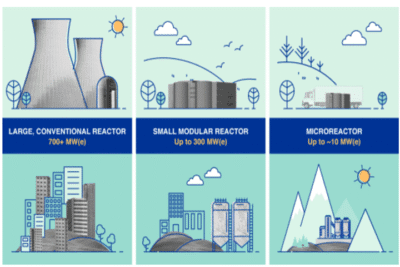
Fig 5 : Types of Nuclear Power Reactors( Large Reactors, SMRs and Microreactors ) and their Capacity in MWe Source: Image: A. Vargas/IAEA (https://www.iaea.org/newscenter/news/what-are-small-modular-reactors-smrs)
In a high case scenario, the IAEA’s projection is that nuclear energy capacity will more than double by 2050, from 371 GW(e) in 2022 to 890 GW(e) by 2050, with only around 10% of this increase expected to come from SMR deployments. Hitting this mark means adding at least 20 GW(e) per year. (Fig 6) “The high case projection is ambitious but technically feasible,” says Henri Paillere, Head of the IAEA’s Planning and Economic Studies Section.
Additionally, In the high case, the IAEA assumes the operating life of a number of nuclear power stations, scheduled for retirement, will be extended.
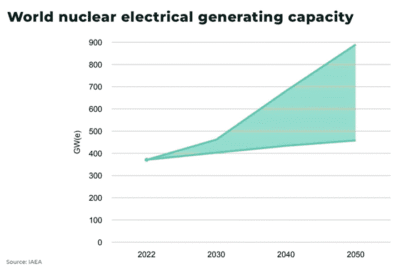
Fig 6: In a high case scenario, the IAEA’s projection is that nuclear energy capacity will more than double by 2050, from 371 GW(e) in 2022 to 890 GW(e) by 2050
The Agency further underscored that smaller reactors like SMRs and microreactors may be particularly suitable for providing power to industrial end users and remote communities with smaller electric grids, and for powering non-electric applications such as hydrogen production and seawater desalination.
However, SMRs will need demonstration before their broader deployment; larger reactors will continue to dominate the nuclear power landscape in the years to come.
The IAEA had reported that Almost all of the 58 nuclear reactors currently under construction are large reactors, and expansion plans in nuclear power operating countries and newcomer countries alike are mostly centred around reactors with 1 GW or more of capacity, although many of these countries are eyeing eventual SMR deployment as well.
Recommendations for The World Bank:
It is thus within this context that I would like to, with due respect, propose for The World Bank to please consider extending the new financing nuclear power policy to include construction of new large nuclear power reactors which have proven to operate safely for decades and successfully avoided nearly 70 Gigatonnes of CO2 since the past 5 decades in addition to its support for SMRs and to support the development of nuclear supply chain capable of providing the necessary components, facilities and services for the world to triple nuclear capacity by 2050 ensuring it will reach and not miss the Paris Agreement target

Sheriffah Noor Khamseah Al‑Idid binti Dato’ Syed Ahmad Idid is an accomplished Innovation & Nuclear Advocate with a distinguished background, including being an Imperial College London alumna and consultant to the International Science and Technology Center (ISTC) and Former Special Officer to the Science Advisor to Malaysia’s 4th Prime Minister. She’s also a member of Women in Nuclear Global (WIN Global).
The views expressed are those of the writer and do not necessarily reflect those of Hipz.
